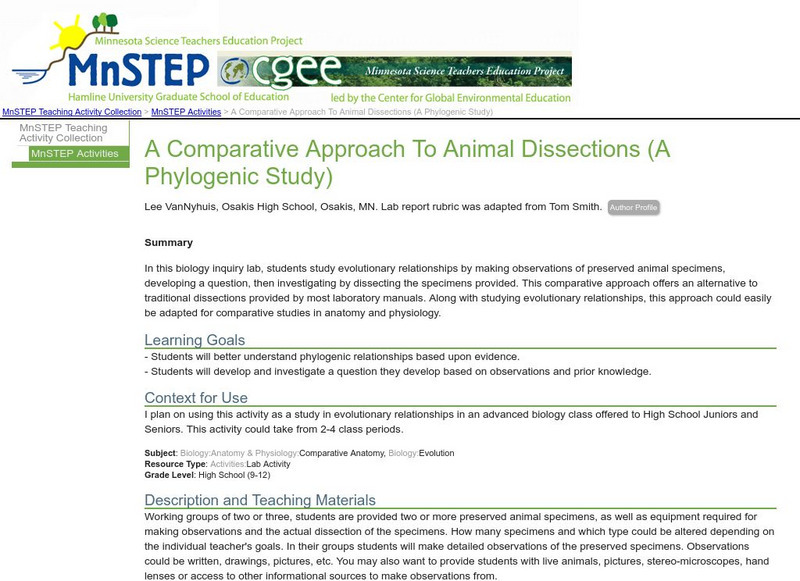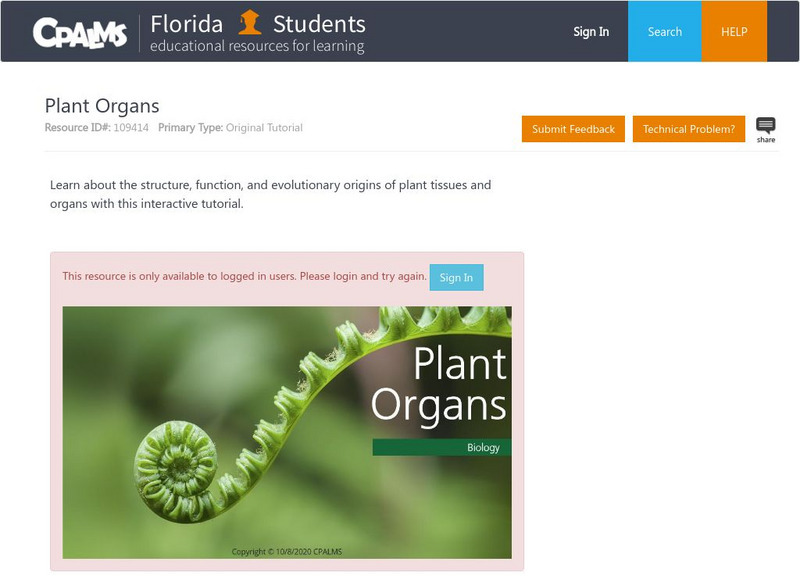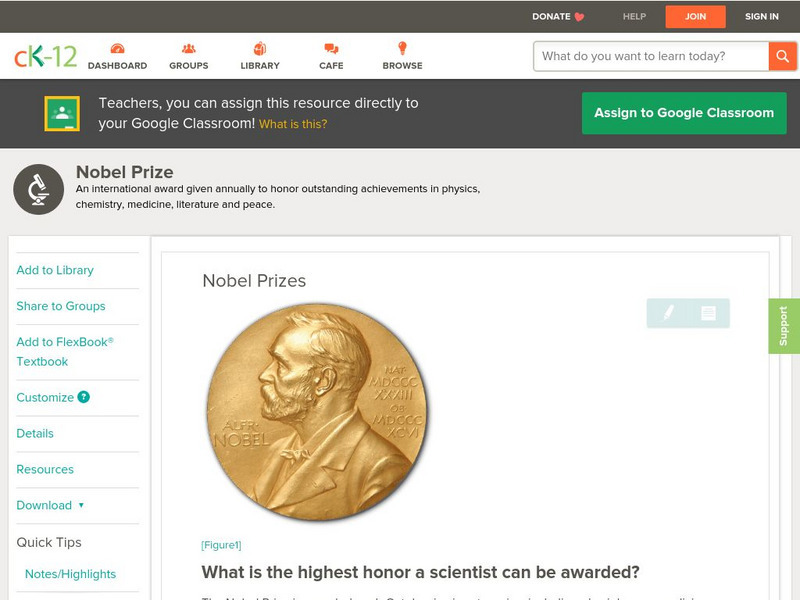Royal Canadian Geographical Society
Canadian Geographic: Animal Facts: Atlantic or Pacific Salmon
Learn fast facts, the physiology, habitats, behaviors and range of the Atlantic or Pacific salmon.
Royal Canadian Geographical Society
Canadian Geographic: Animal Facts: Tundra Swan
Learn fast facts, the physiology, habitats, behaviors and range of the tundra swan.
Royal Canadian Geographical Society
Canadian Geographic: Animal Facts: Walrus
Learn fast facts, the physiology, habitats, behaviors and range of the walrus.
Science Education Resource Center at Carleton College
Serc: A Comparative Approach to Animal Dissections (A Phylogenic Study)
In this biology inquiry lab, students study evolutionary relationships by making observations of preserved animal specimens, developing a question, then investigating by dissecting the specimens provided. This comparative approach offers...
Stanford University
Sea Urchin Images
Free, downloadable images on a variety of topics related to urchin development, anatomy and physiology. Useful for teaching, worksheets and reports.
TED Talks
Ted: Ted Ed: Why Do Our Bodies Age?
Human bodies aren't built for extreme aging: our capacity is set at about 90 years. But what does aging really mean, and how does it counteract the body's efforts to stay alive? Monica Menesini details the nine physiological traits that...
PBS
Pbs Teachers:kamchatka: Land of Abundant Salmon
Identify the three main groups of fishes and identify external and internal bony fish anatomy and physiology. Examine the Kamchatka ecosystem and the role of salmon in the food web, and describe the salmon spawning cycle.
Earth Life
Earth Life: Blood
A very good description of the blood and circulatory systems of mammals and the important role that blood plays in the physiology of animals.
PBS
Pbs Teachers: Changing Your Mind: Nerve Cell Infomercials
Build nerve cell models in cooperative groups, and articulate the structure and function of nerve cells to explore the nervous system. Describe specific elements of human physiology by "advertising" the nervous system in nerve cell...
PBS
Pbs Teachers: Scientific American: Super People: Getting the Minerals Out
Explore the composition and physiology of bones, describe how humans lose bone mass and explain how this becomes a challenge for extended space flight. Compare and contrast the decalcifying properties of several liquids.
PBS
Pbs Teachers: Scientific American: The Wonder Pill: Placebo 2
Identify the physiology of how a placebo affects the brain through "ritual expectations." Perform an experiment to explore how the manner in which a ritual is presented may affect the outcome of its success.
PBS
Pbs Teachers: Scientific American: Worried Sick: Temperature and Stress
Explore the physiological effects of stress, and investigate the techniques of Tibetan monks to regulate their body temperature. Attach a thermistor to your fingertip to see if relaxation techniques can produce changes in body temperature.
National High Magnetic Field Laboratory
Magnet Academy: Willem Einthoven
Willem Einthoven invented a string galvanometer that lead to the electrocardiogram, which measures heart activity. For his discovery, Einthoven was awarded the Nobel Prize in Physiology or Medicine in 1924.
Other
Live Binders: Virtual Eye Dissection
Take a look at a diagram of the eye, know its anatomy, physiology, and virtually dissect it.
CPALMS
Florida State University Cpalms: Florida Students: Plant Organs
Learn the concepts and skills from Grades 9-12 Biology to relate the structure of each of the major plant organs and tissues to physiological processes. Enhance familiarity with the structure, function, and evolutionary origins of plant...
Famous Scientists
Famous Scientists: Alexander Fleming
Find out about the scientist who won the Nobel Prize in Physiology or Medicine for his discovery of the antibiotic, penicillin.
Other
Whitman College: Virtual Fetal Pig Dissection
A supplement to lab dissections exploring introductory mammalian anatomy and physiology, for a fetal pig.
CK-12 Foundation
Ck 12: Biology: Nobel Prizes
[Free Registration/Login may be required to access all resource tools.] Covers the Nobel Prize and lists Nobel Prize winners in Medicine or Physiology, and in Chemistry.
Annenberg Foundation
Annenberg Learner: The Chemistry of Running
A simulation where students explore the chemistry and physiology of exercise. Students will choose an avatar and try to set a running goal by applying their knowledge of chemistry. Students will also calculate to see how many...
University of California
Uscb: The Bioluminescence Web Page
A very detailed covering of bioluminescence including myths, organisms, chemistry, physiology, and photos. Contains many links for further information.
BBC
Bbc: Nature Wildfacts: Dung Beetle
Learn what ancient Egyptians thought about this peculiar insect. This resource has a detailed fact sheet to learn more about the history and physiology of the Dung Beetle.
Royal Canadian Geographical Society
Canadian Geographic: Animal Facts: Wolverine
A profile of the wolverine including physiology, habitat, behaviors, range, and basic facts.
Royal Canadian Geographical Society
Canadian Geographic: Animal Facts: Black Widow Spider
Learn fast facts, physiology, habitats, behaviors, and range of the black widow spider.
Royal Canadian Geographical Society
Canadian Geographic: Animal Facts: Ladybug
Learn fast facts, physiology, habitats, behaviors, and range of the ladybug.
Other popular searches
- Anatomy and Physiology
- Human Anatomy and Physiology
- Anatomy & Physiology
- Exercise Physiology
- Heart Anatomy and Physiology
- Human Physiology
- Anatomy Physiology
- Plant Physiology
- Anatomy and Physiology Web
- Plant Anatomy and Physiology
- Physiology of the Ear
- Human Anatomy & Physiology

















